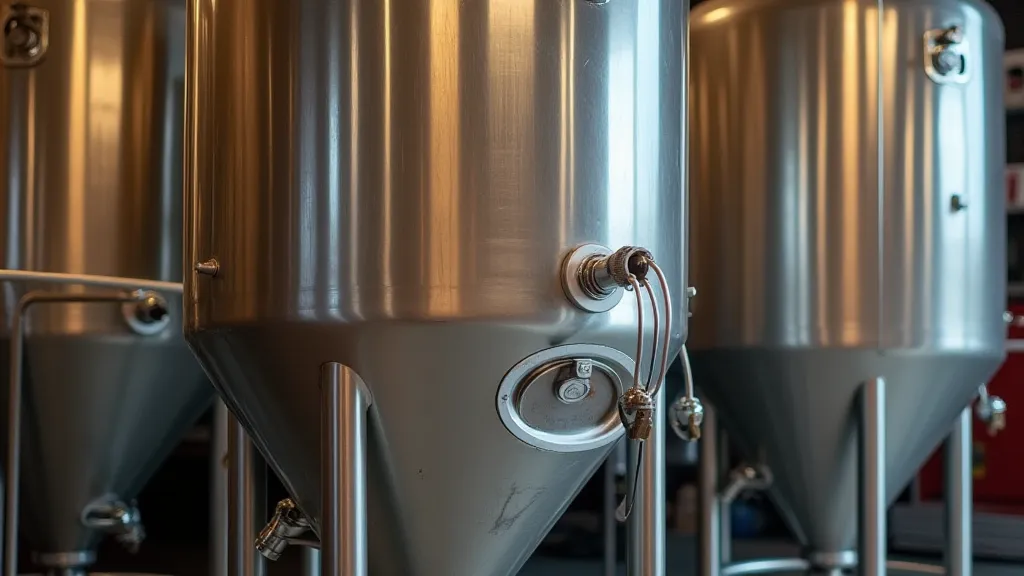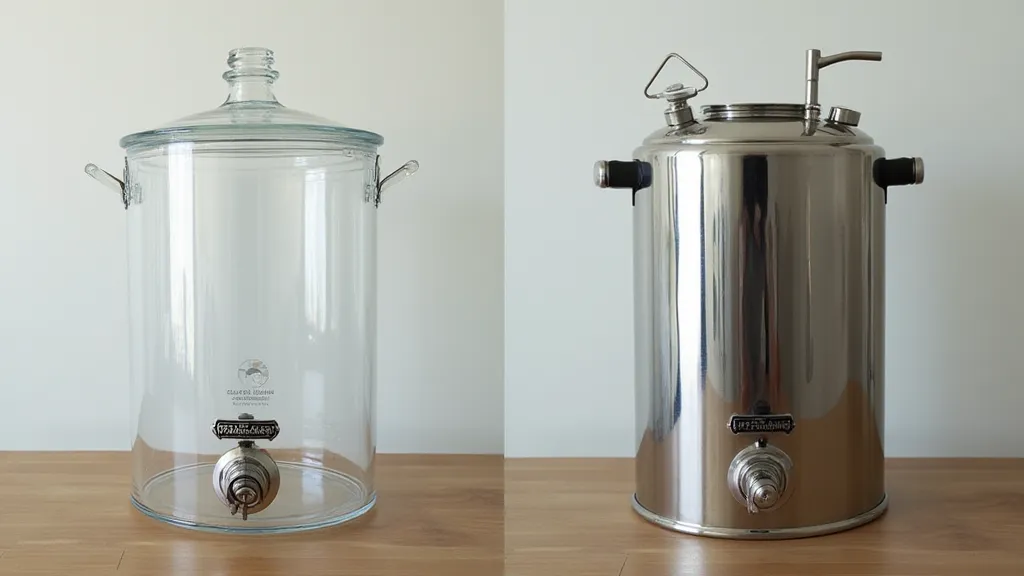Choosing the Right Fermenter: Plastic vs. Stainless Steel
So, you're embarking on the exciting journey of home brewing! One of the first equipment decisions you'll face is selecting a fermenter. It's a crucial piece of brewing equipment, impacting both the process and the quality of your beer. While the core function is the same – providing a controlled environment for yeast to work their magic – plastic and stainless steel fermenters offer distinct advantages and disadvantages. This guide will break down the pros and cons of each, helping you decide which is right for your brewing style and budget. Before we dive in, it's worth considering that even the most basic brewing process is influenced by numerous factors – understanding some key aspects like water chemistry can significantly improve your results.
Plastic Fermenters: The Budget-Friendly Option

Plastic fermenters, typically made from food-grade polyethylene (HDPE), are the most common choice for beginner homebrewers. Their popularity stems from their affordability and relative ease of use. Many new brewers start with a basic kit, and a plastic fermenter is often included. If you're just getting started, check out choosing your first home brewing kit to ensure you have all the necessary equipment for a successful first batch.
Pros of Plastic Fermenters:
- Cost-Effective: Plastic fermenters are significantly cheaper than stainless steel options, making them accessible to those just starting out.
- Lightweight: They’re much lighter than stainless steel, making cleaning and transferring beer easier, especially for smaller batches.
- Transparent/Translucent: Many plastic fermenters are translucent or clear, allowing you to observe the fermentation process – a fascinating visual indicator of your beer’s progress.
- Easy to Clean: Generally, plastic is quite easy to clean with the appropriate sanitizers.
Cons of Plastic Fermenters:
- Potential for Flavor Absorption: While food-grade, plastic can sometimes impart subtle flavors to your beer, especially with certain hop varieties or extended fermentation times. This is often minimal, but worth noting.
- Less Durable: Plastic is less durable than stainless steel and can be susceptible to cracking or breaking if mishandled.
- Limited Temperature Control: Plastic doesn't retain heat or cold as well as stainless steel, which can make temperature control more challenging. This can be especially noticeable when trying to brew certain styles of beer that require very specific temperature ranges.
Stainless Steel Fermenters: The Professional's Choice

Stainless steel fermenters are the workhorses of commercial breweries and are increasingly popular among experienced homebrewers. They represent a more substantial investment but offer numerous benefits. The ability to precisely control fermentation temperature, for example, is a significant advantage, especially when experimenting with different yeast strains and recipes.
Pros of Stainless Steel Fermenters:
- Flavor Neutral: Stainless steel is completely flavor neutral, guaranteeing that your beer's taste is purely from your ingredients and recipe. This is a crucial factor for brewers who want to showcase the nuances of their malt and hop selections.
- Durable & Long-Lasting: Stainless steel is incredibly durable and resistant to damage, ensuring years of reliable use. With proper care, a stainless steel fermenter can be a lifelong investment.
- Excellent Temperature Control: Stainless steel’s thermal mass helps maintain stable temperatures during fermentation, crucial for consistent results. Many brewers utilize temperature controllers to precisely regulate the fermentation process.
- Easy to Sanitize: Stainless steel is easily sanitized and resistant to corrosion. This makes it simple to maintain a clean and hygienic fermentation environment.
Cons of Stainless Steel Fermenters:
- Cost: Stainless steel fermenters are considerably more expensive than plastic options. The initial investment can be substantial, but often offsets the longevity of the equipment.
- Heavier: They are significantly heavier, making cleaning and transferring beer more challenging, especially with larger batches. Investing in a bottling bucket or a pump can mitigate this issue.
- Opaque: You can’t see the fermentation process through stainless steel, requiring reliance on other indicators like airlock activity and specific gravity readings. However, experienced brewers often find that these indicators are sufficient to monitor fermentation progress.
Which Fermenter is Right for You?

The best choice depends on your budget, experience level, and desired level of control. Beginner brewers with limited budgets often start with plastic fermenters. As you gain experience and your brewing ambition grows, upgrading to stainless steel provides a significant leap in performance and longevity. Consider your priorities and choose the fermenter that best aligns with your homebrewing goals! Beyond the fermenter itself, understanding the nuances of ingredients is crucial to consistently producing high-quality beer. The impact of water chemistry, in particular, can be significant; researching understanding the importance of water chemistry in brewing can lead to marked improvements in flavor and clarity.
Many brewers also enjoy exploring different types of beverages. If you're interested in expanding your repertoire beyond beer, experimenting with brewing cider can be a rewarding experience. You're essentially combining fermentation principles with fresh fruit. To delve deeper into the process of brewing cider, you can discover a whole new realm of fermentation possibilities.
Beyond the Basics: Key Considerations
Ultimately, the "right" fermenter is the one that best suits your needs and preferences. Don't feel pressured to invest in expensive equipment before you're ready. Start with a plastic fermenter and gain some experience, then consider upgrading to stainless steel as your brewing skills and ambition grow. Remember to sanitize all equipment thoroughly before each use to prevent contamination and ensure the best possible results. Different beer styles often have very specific temperature and fermentation profiles, so understanding these nuances will elevate your brewing. Happy brewing!
Troubleshooting Common Issues
Even with careful planning and the right equipment, things don't always go as planned. Flavor absorption in plastic fermenters is a common concern, and while generally minimal, diligent cleaning and the use of food-grade sanitizers can help mitigate this. With stainless steel, condensation can sometimes be an issue, which can lead to unwanted microbial growth. Proper ventilation and cleaning are essential. And always remember, patience is a virtue in brewing – fermentation takes time, so don't rush the process!





